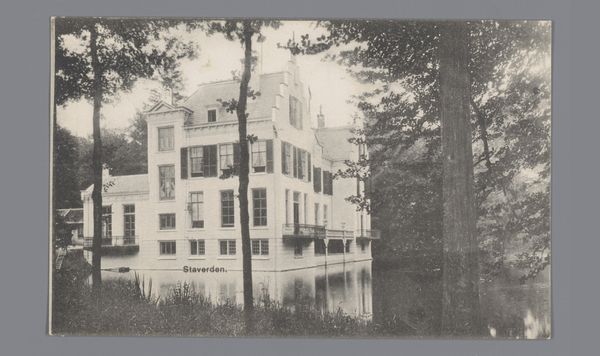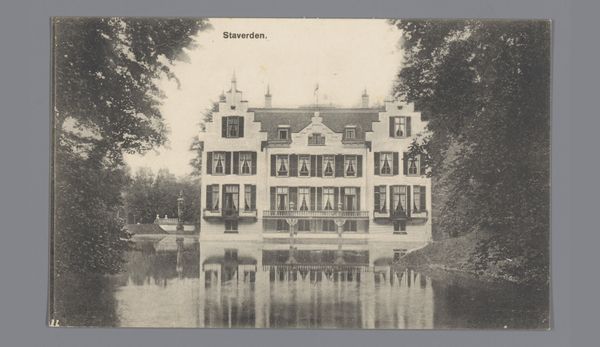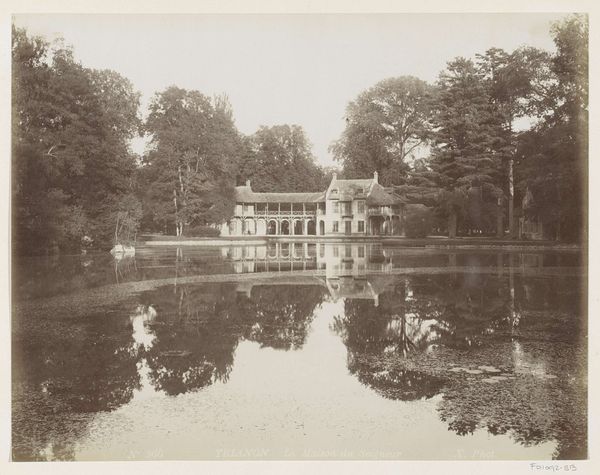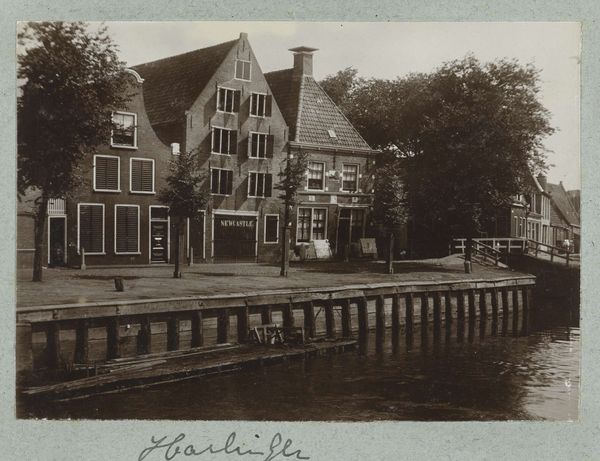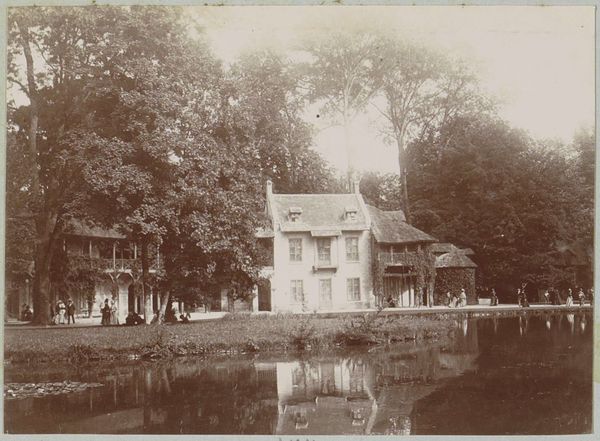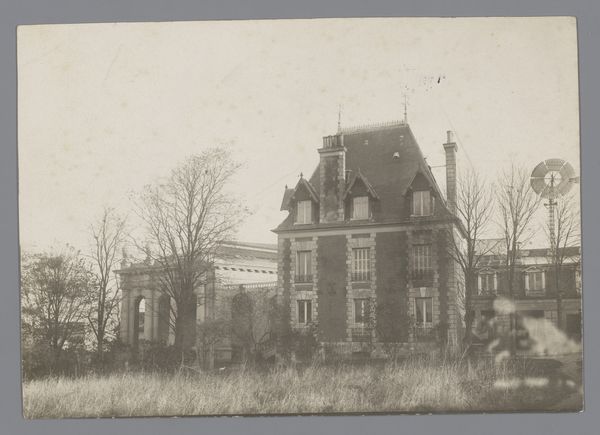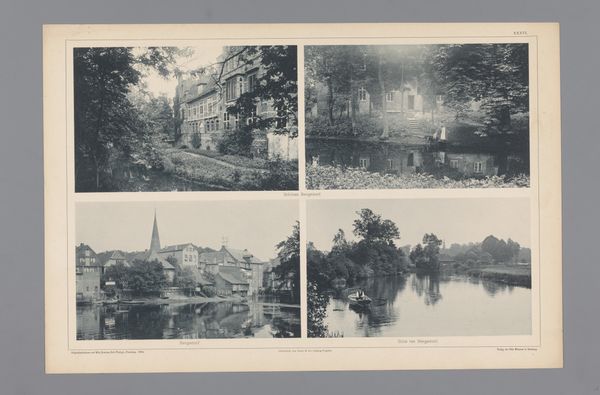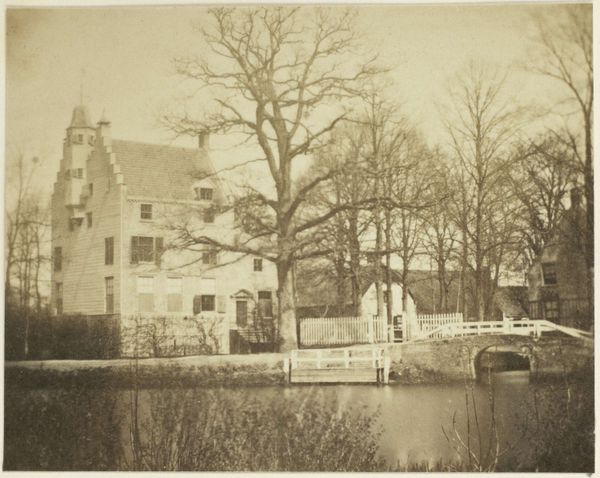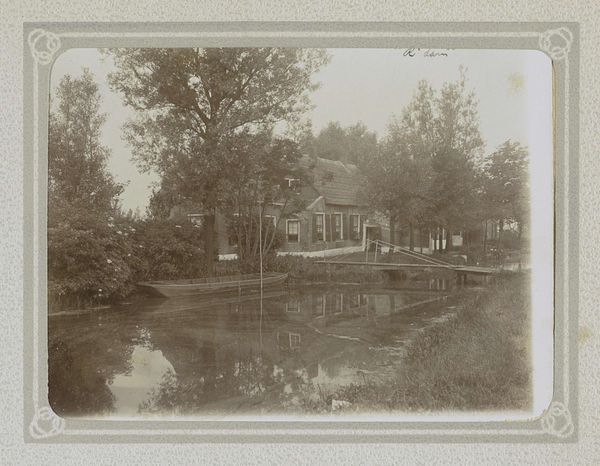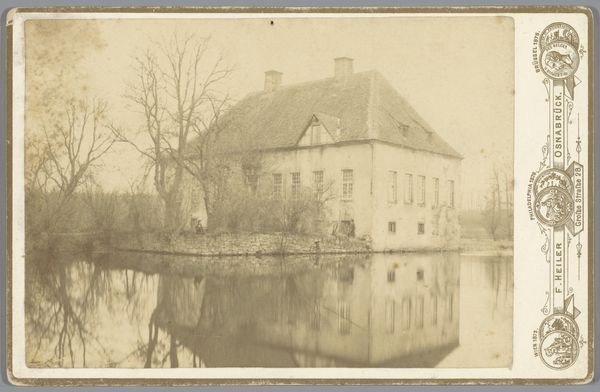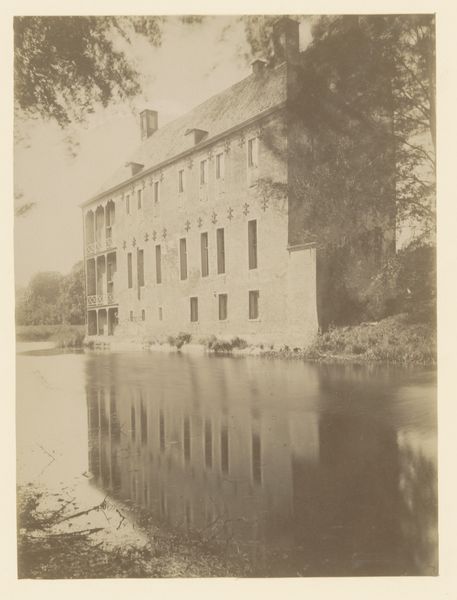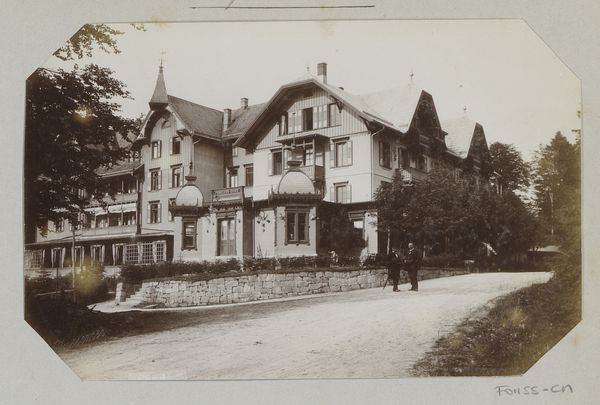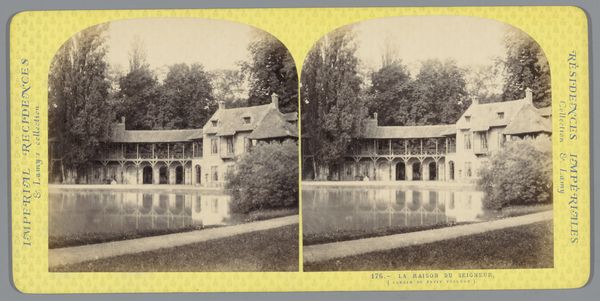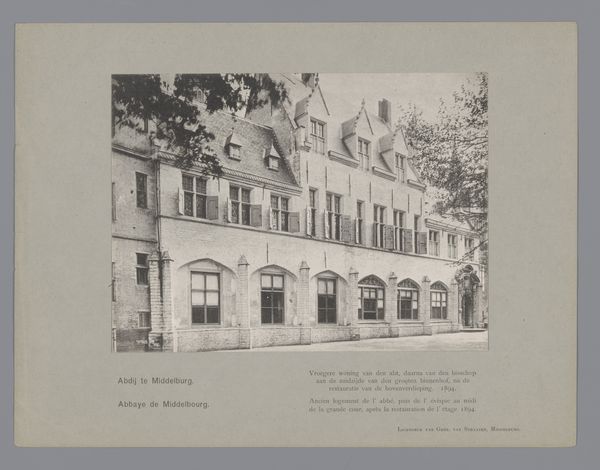
print, photography
# print
#
landscape
#
photography
#
cityscape
Dimensions: height 89 mm, width 141 mm
Copyright: Rijks Museum: Open Domain
Editor: This is a photograph titled "Gezicht op het Kasteel van Staverden" taken before 1928, by M.C. Termaat. It appears to be a print. I’m struck by how the still water reflects the sharp, angular architecture of the building. It creates a symmetrical, yet softened image. How do you interpret this work? Curator: From a formalist perspective, the stark contrast between the rigid geometry of the castle and the organic forms of the surrounding trees immediately captures attention. Notice how Termaat uses the verticality of the trees to frame the horizontal expanse of the water and the central structure. This tension between the natural and the constructed is visually compelling. The use of light and shadow is also masterful; observe how the reflections on the water create a secondary, almost abstract, composition beneath the more literal depiction of the castle. Editor: I hadn't considered the vertical and horizontal play in the composition before, that's a great insight. Is there significance to the monochromatic palette? Curator: Precisely. While seemingly limiting, the choice of a monochrome palette actually amplifies the textural contrasts within the image. The smooth, reflective surface of the water is juxtaposed against the rough bark of the trees and the varied textures of the castle's facade. Furthermore, consider the use of black and white as a tool to abstract from reality, to draw our attention to form and structure above all else. How might the image differ were it rendered in full color? Editor: I imagine the colors would make it a different image. Color could risk shifting our focus towards the details of the surroundings, possibly overshadowing the architecture itself. It seems as though the conscious removal of that variable invites closer consideration of line, shape, and texture instead. Thank you, this was a very helpful analysis! Curator: Indeed, and in analyzing these visual components, we gain a richer understanding of the photograph's intrinsic qualities and the artist's intent. I found the conversation very illuminating too!
Comments
No comments
Be the first to comment and join the conversation on the ultimate creative platform.
